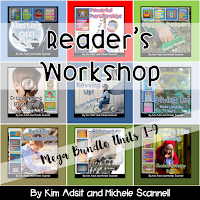So let’s be honest….I’ve never had science as a top priority! Teach them to read. Teach them to write. Teach them to count. Teach them to add. You get the point. But this year, we are really trying. And…..WE LOVE IT…and so do the kids! Here’s the plan…Use a structure we believe in and teach the science standards! So here’s what we are doing:

We start each science lesson with a mini lesson….A mini lesson lasts only 10 minutes so we have to be quick and focused. Here is our anchor chart that will guide our unit on Stars. Then, we break of the physical attributes into more detailed points. We started with Star Brightness. Wow! I didn’t know there was so much to know about Stars!



Each lesson starts with a quick connect to yesterday’s learning. “Remember yesterday we we said….” When I am scripting my plans, I always bold whatever I am going to say, leaving the rest of the text not bold. This makes it easier to use as a script. You can get a copy of this plan and the activity pieces at the bottom of this blog post.

The “teach” portion of the plan is where you quickly teach the concept. Kids learn by doing, yet we spend the majority of our lessons worrying about what WE are saying instead of what the kids are saying!
I keep the structure of the workshop the same—same sequence in the structure and same wording to introduce each of those steps. For the teach I say, “Today, I am going to show you…”
You can read in the script exactly what I said for the teach so I’m not going to take up space here typing it. These are the cards that I used to do the lesson. You can get these in the same download as the scripted lesson.


I start this section of the lesson by saying, “Now, it’s your turn.”
Here’s what we did. We gave the kids cards with different groups of colored stars. Their job was to figure out which group was the hottest group.We gave them tens frames and unifix cubes to figure out the value of each group. The lower the number—the hotter the star. Now, this is a very simplistic way to explain a very complex idea. But, guess what!? They got it!!! Insert teacher happy dance here!



For the link we say, “So remember boys and girls, today and everyday, scientists know…” This is where you are repeating the focus of the lesson. It is important that you leave the lesson with the REASON you did the lesson being the last thing that they hear!

Application is often referred to as work time. This is when the kids move to centers or stations, or whatever you have set up, to apply all that they know about science. Here’s what we are thinking….How can we set up the centers for stars when we haven’t taught them about stars!? So, we set up our centers for science tools. Our Application time is going to be whatever we taught in the preceding weeks.

We love using the task cards. This makes it super easy for our kids to know what to do in each of the areas. Here are a few of the science centers that we have going. We run these centers for 20 minutes each day. It is really about enough time to do one activity. Then, we have tubs of science books they can read if they finish early. We set up 5 centers, they do one each day. This makes our science block 30 minutes each day. One of the centers---measuring with bears.


Another one of the centers was using magnifying glasses. They looked at the tiny picture in the circle. Then, on their recording page, they drew what they saw.


In this center they had to “find” the science tools in our nonfiction Science Tools book. Then, they recorded the page number beside the tool. Easy way to model how to make an Index.
Can I just say that we are really excited about science? It has been a ton of research, but it is worth it! For the first time we feel that we are really teaching it!
Here are the science resources that we are using:


We just finished planning for our next unit The Moon.






































































![original-100865-1[1] original-100865-1[1]](https://blogger.googleusercontent.com/img/b/R29vZ2xl/AVvXsEg1cMvPTAfEwdKt8pLMOjaX4prXcjBLIW8H4bhUUdRgLIuovSbYyxkJ6zSxudhet7uhQ8sjJM4DkbWDutZFuozMfs9XTWCbIANnaw7UMRrBj1nmeF0zR-aCcdc1H_ilJ0hhcTVEMYVO-D8/?imgmax=800)




















